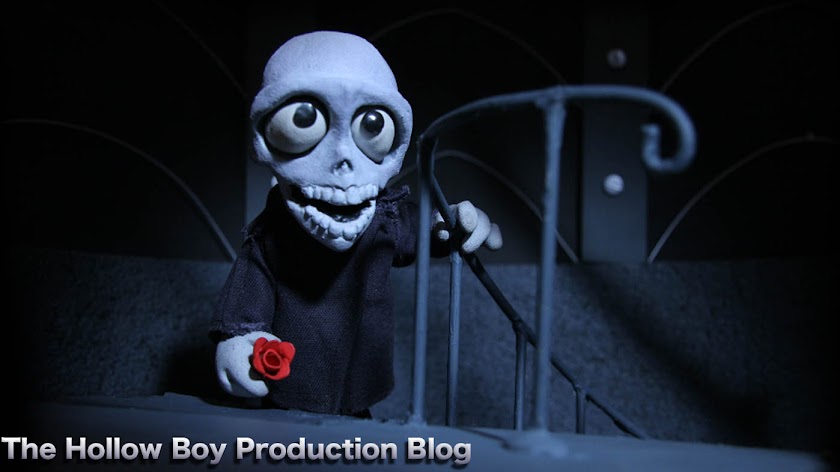The following photos explain the steps I took in creating the baseball shirt for the puppet above.
First off I'd like to talk a little bit about choosing your fabric. One important thing to consider is if the fabric you've chosen has a particular print or design stitched into it. If it does, make sure it looks proportional to the size of the puppet or else the scale of your puppet compared to the scale of his clothes will look like they don't belong in the same world, unless of course that's the effect your going for.
Also plan out how much fabric you'll need ahead of time before you create the puppet's costume. Chances are you won't need very much since puppets are usually smaller than real human beings. If this is the case you can usually find fabric remnants for pretty cheap. As you can see in the photo above I got quite a bit of material for only 25-75 cents each at a thrift store.
The first thing I made was a fabric template out of paper. This template is based on the size and body style of the puppet and will serve as a construction guide for the actual fabric.
Pin the template onto the puppet for further fitting and to make any final changes.
Once you settle on the final template, transfer the design onto the fabric to be used. You generally want to use chalk to mark your fabric that way it's easy to clean off. But for the sake of the tutorial I wanted you to actually be able to see the outline transfer on the light colored fabric.
After tracing both templates onto your fabric, cut them out and pin them onto the puppet. Draw a guideline where the two pieces should meet on each side (usually right underneath the underarm). This line will eventually become the seam where the front and back sides of the shirt will be sewn together. As you can see here they are currently overlapping one another because of the edges we extended on the template. This is good because it allows us some wiggle room when trying to fit a certain garment to a particular puppet and it gives us the choice of giving the shirt a baggier or tighter fit. The same goes for the seams over the puppet's shoulder.
Once you've draw the line where both halves will be seamed together, take the fabric off of the puppet and flip it inside out so that the outsides of the the shirt are now touching each other. Now using the lines we drew in the last step as an indicator, begin sewing the two sides together. A sewing machine is the quickest and most efficient way to do this, but if you don't have one you can always default to stitching it together by hand.
Once you've stitched both sides together, flip the garment inside out again to it's correct position and put it on your puppet to see how it fits. If done correctly, the seam will resemble that of realistic clothing since it was stitched together while being inside out.
To make the clean edge I simply folded it over and glued it back with a glue gun. Be careful no to use to much glue or the sleeve's edge will look become too stiff.
Now fold the sleeve in half (into it's inside out position) to stitch it together. Once you are done seaming both halves together, flip the sleeve inside out to it's correct position. If done right it should look like the photo above.
Okay, if your still with me here's where it gets tricky. To join the red sleeve to the grey body portion of the shirt, the grey part has to be turned inside out while the red sleeve remains in it's final position. Next, sew the sleeve to the body portion using the extra fabric left on the top part of the sleeve.
Once you get past that, simply flip the grey part inside out to it's correct position while leaving the sleeve alone. Here's a close up of what the seam should look like.
Once you've finished with both sleeves the shirt should look something like this. The only thing I didn't include is how to make the collar that can be seen in the first picture. To do this all you need to do is fold over an extra piece of correctly sized fabric onto itself and glue it together to get that clean seam like we did to make sleeve's edge. Then just glue it down around the puppet's collar.
When in doubt take a look at how real clothes are stitched together. I learned a lot just by looking at how my own t-shirts and pants were constructed, although it's probably not a good idea to take your pants off in public for the sake of trying to understand how they were created.
Speaking of pants, In the next post I'll cover how to put some pants on this guy, and as always feel free to e-mail me with any questions.
-Alfonso















